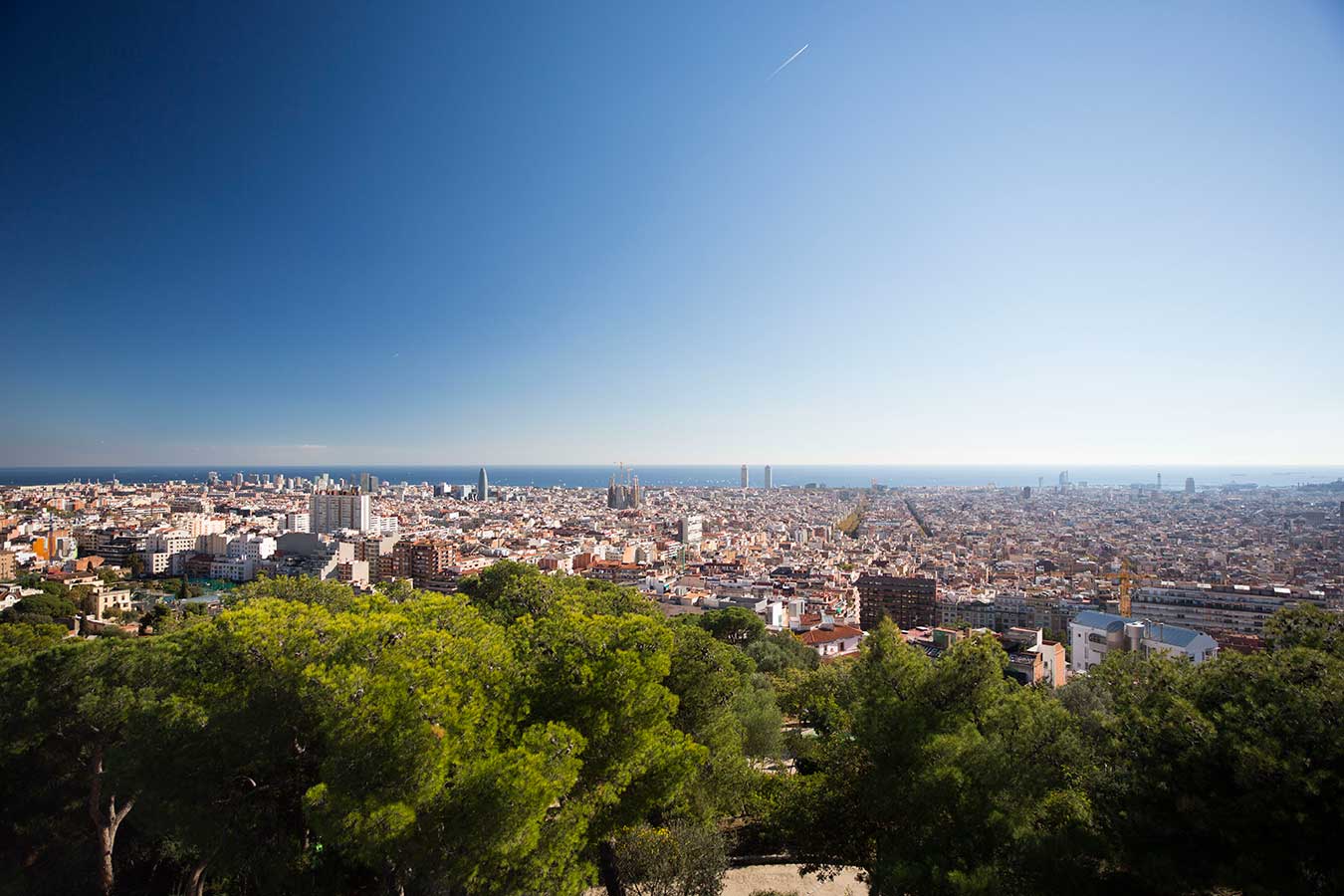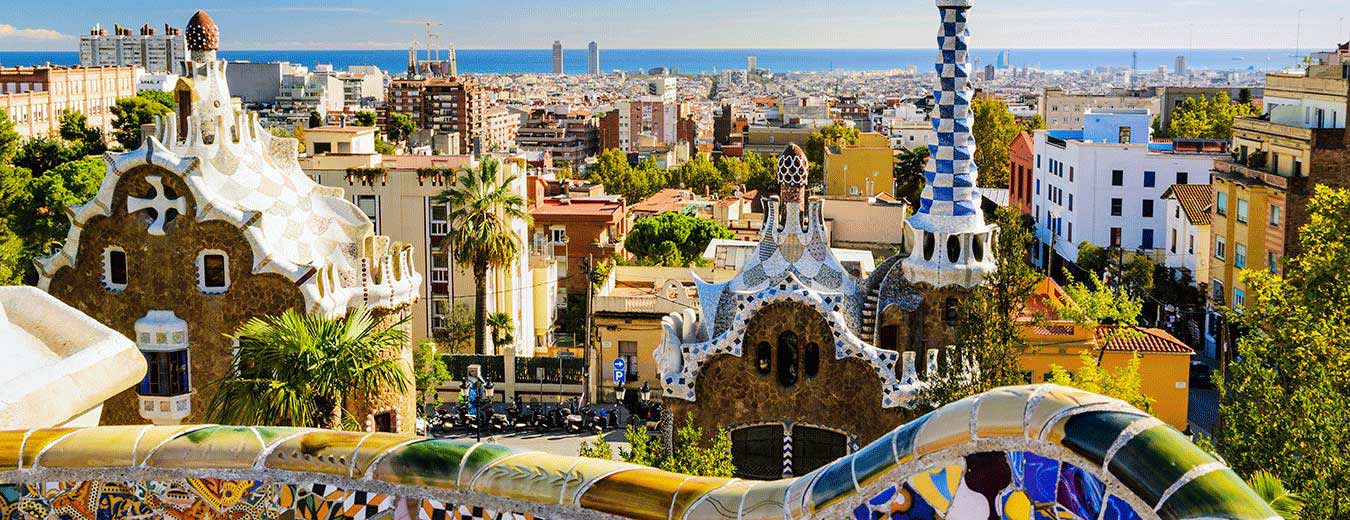

Park Güell was never completed. The buildings you see in the park today are just a fraction of those that would have been built if one had followed the original plan. But in the years following the Tragic Week (1909), Barcelona was marked by a deep economic and social crisis, and the rich people who had planned to sell the park withdrew from the project.
Eusebi Güell, who had started the construction, died in 1918 and a few years later his son sold the park to the municipality. Thus, Park Güell became a public park, one of the largest in Barcelona, and it is, to this day. However, there was an entrance to enter the park's monumental area 'in 2013 - but you can see a large part of the park without paying, but it now costs money to sit on Gaudí's famous bench.
Park Güell is one of the most popular places in Barcelona, and one of Barcelona's most visited tourist attractions. Park Güell is known for the many jokers, musicians, and other people who entertain the many tourists. It is estimated that over 3 million people visit the park annually, but these numbers dropped drastically in March 2020 due to Covid-19.
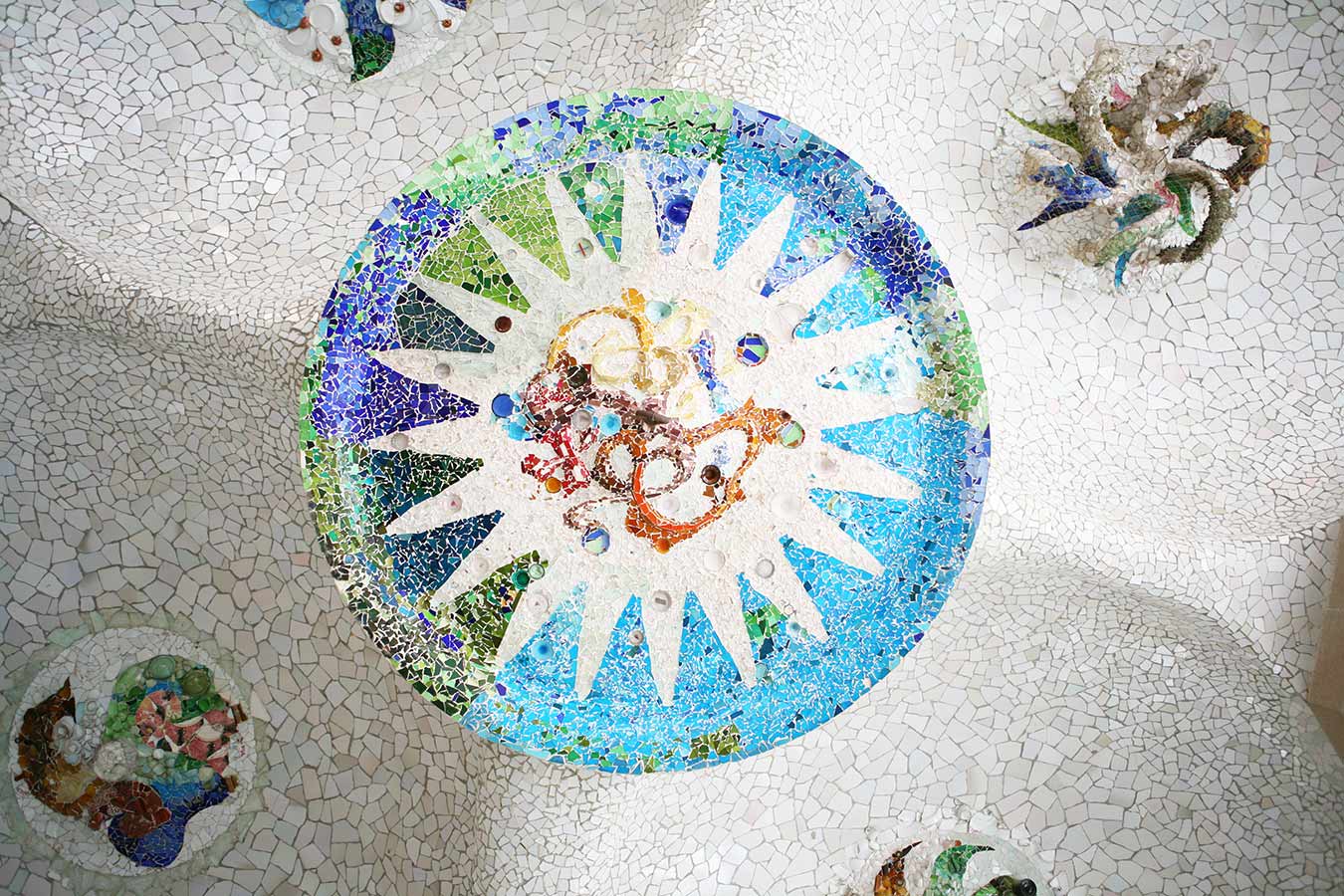
Park Güell measures 18 hectares, and the large park is located on the Carmel hill in the Gracia district, between La Salut, Vallcarca-Penitents and El Coll. The park is divided into two parts: the 'monumental area' (12 hectares), which is on the UNESCO World Heritage List and the surrounding forest area of 8 hectares.
The park offers both world-class architecture, a formidable view and a rich plant and animal life. Before the park was laid out, the area was planted with i.a. vines, olive trees and fruit trees, and in addition has pine trees, agave and acacias. When the park was laid out, fossils of various animals were found that lived where the park is today for more than 1 million. years ago (in the so-called Pleistocene period): rhinos, elephants and deer.
You can reach the park by public transport from either Vallcarca or Lesseps metro stations (both on Barcelona's green metro line / line 3) or take bus number 24 from Plaça Catalunya or Passeig de Gràcia.
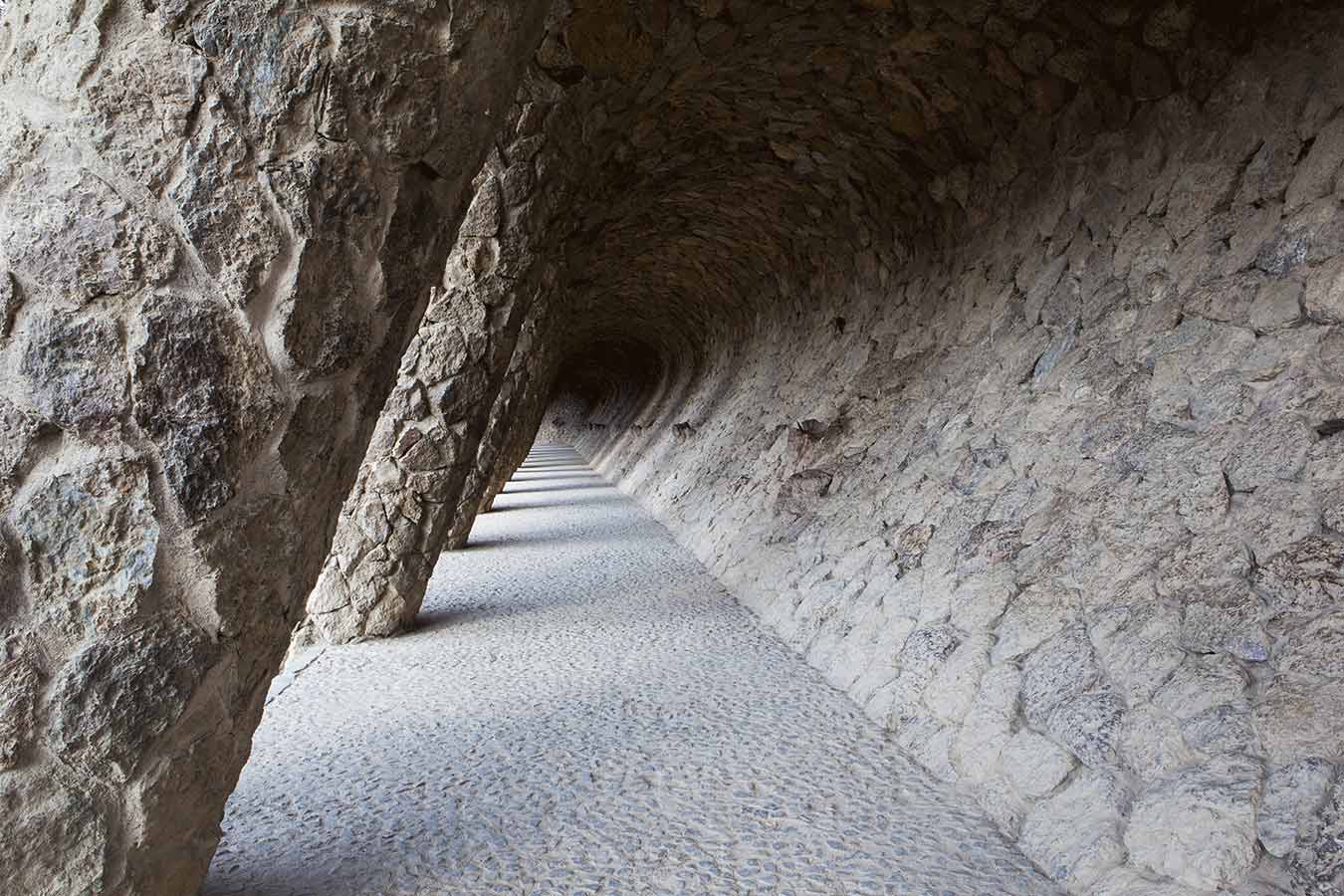
Antoni Gaudí started working on the Park in 1900, and left the project in 1914. At this time of his carreer, Gaudí was fully developed as an architect and had found his very own style. Gaudí incorporated structural elements that he had developed while working on the Sagrada Familia church and the crypt of Colonia Güell.
The architect uses organic forms, and fusions gothic, Arabic and historicist ele,emts with references to Catalan myths, symbols and narratives as well as Catholic themes. The entrance thus refers to the Catalan territories ind the middle ages, while the 'Calvary Hill' (or Turó de les tres Torres, as it is also called) has both Catholic references and connection to the Temple of Apollo at Delphi in the Peloponnese.
The park also built on inspiration from the English Garden-City, developed by Ebenezer Howard from 1898. Howard tried to combine the advantages of the city and the country and avoid the disadvantages of the same in his Garden Cities, as shown in the Brentham Garden for example, located in a suburb of London. This reference to the English Garden-City is the reason why Park Güell is spelled with k instead of c (in Catalan it would be spelled with c = Parc ).
The proyect started when the where the park was laid out had been located at the Muntanya Peleda, 'the bald mountain' as it is called in Catalan) and construction began in 1900. Originally, it the plan included 60 houses to be built in the park. The location was chosen for its views and its fresh air, far from the polluted factories in the center of Barcelona. Both Antoni Gaudí and Eusebi Güell moved to the park with their families in 1906. The house where Gaudí lived was designed by his colleague Francesc Berenguer in 1904.
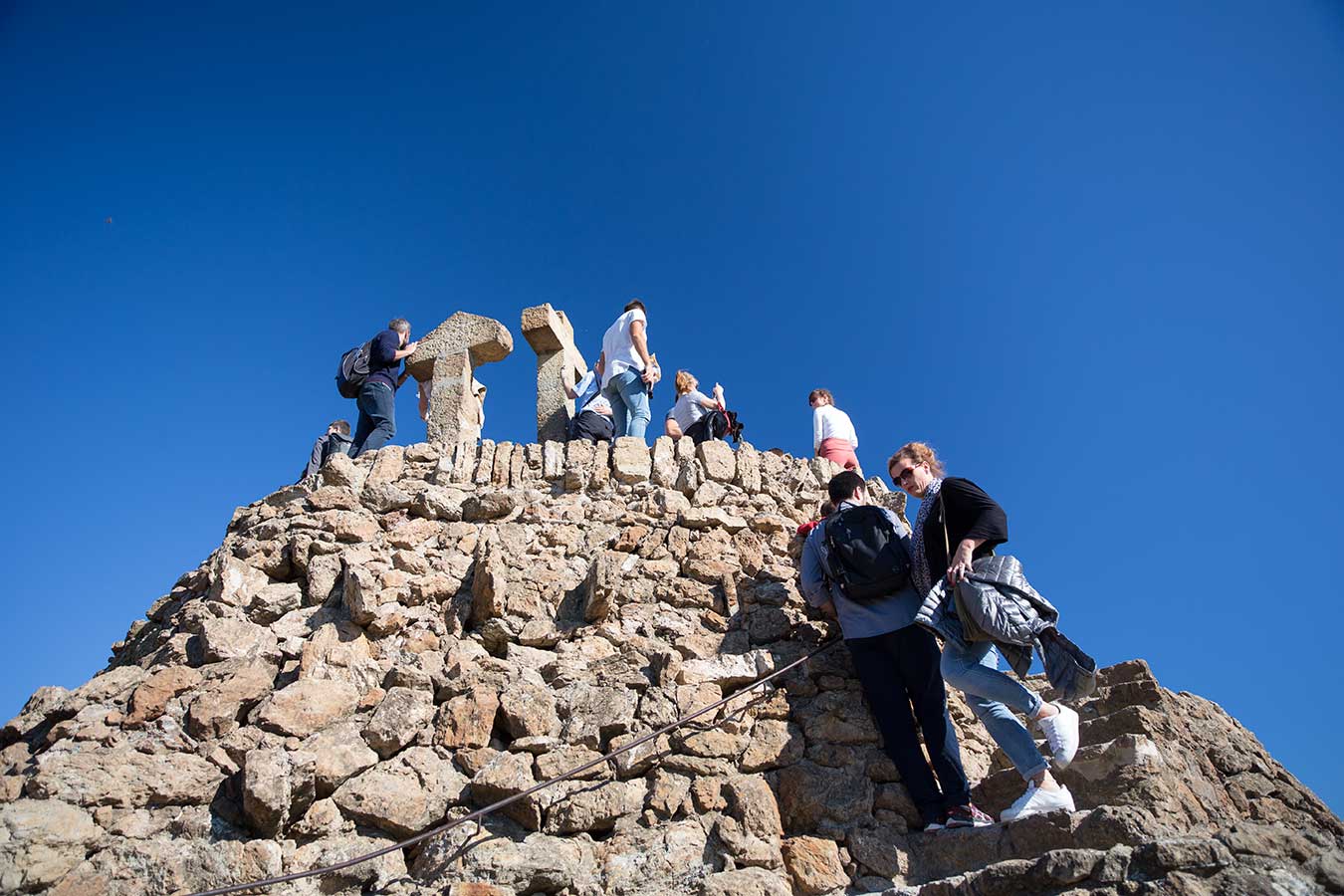
If you have the time for it, there are many hours of visits to Park Güel, possibly. spread over several days. Several of the park's buildings are converted into museums and the park has a large forest area that you can visit.
The colonnades are shaped after the chain arch that Gaudí used in most of his constructions. This soft arch creates great bearing capacity and mimics the organic forms of nature. Gaudí designed a series of paths supported by pillars, which it was possible to walk on or ride in a carriage. The trails measure a total of 3 km. and uses both Romanesque and Gothic elements.
Park Güell is first and foremost known for the fantastic mosaic bench designed by Antoni Gaudí in collaboration with Josep María Jujol. The bench is shaped like a sea snake, and meanders organically around the entire square. The square measures almost 3,000 m2 and was built between 1907 and 1913. Gaudí had initially planned the construction of a Greek theater. There are no tiles in the square, to allow the water to seep down to the columns below the square.
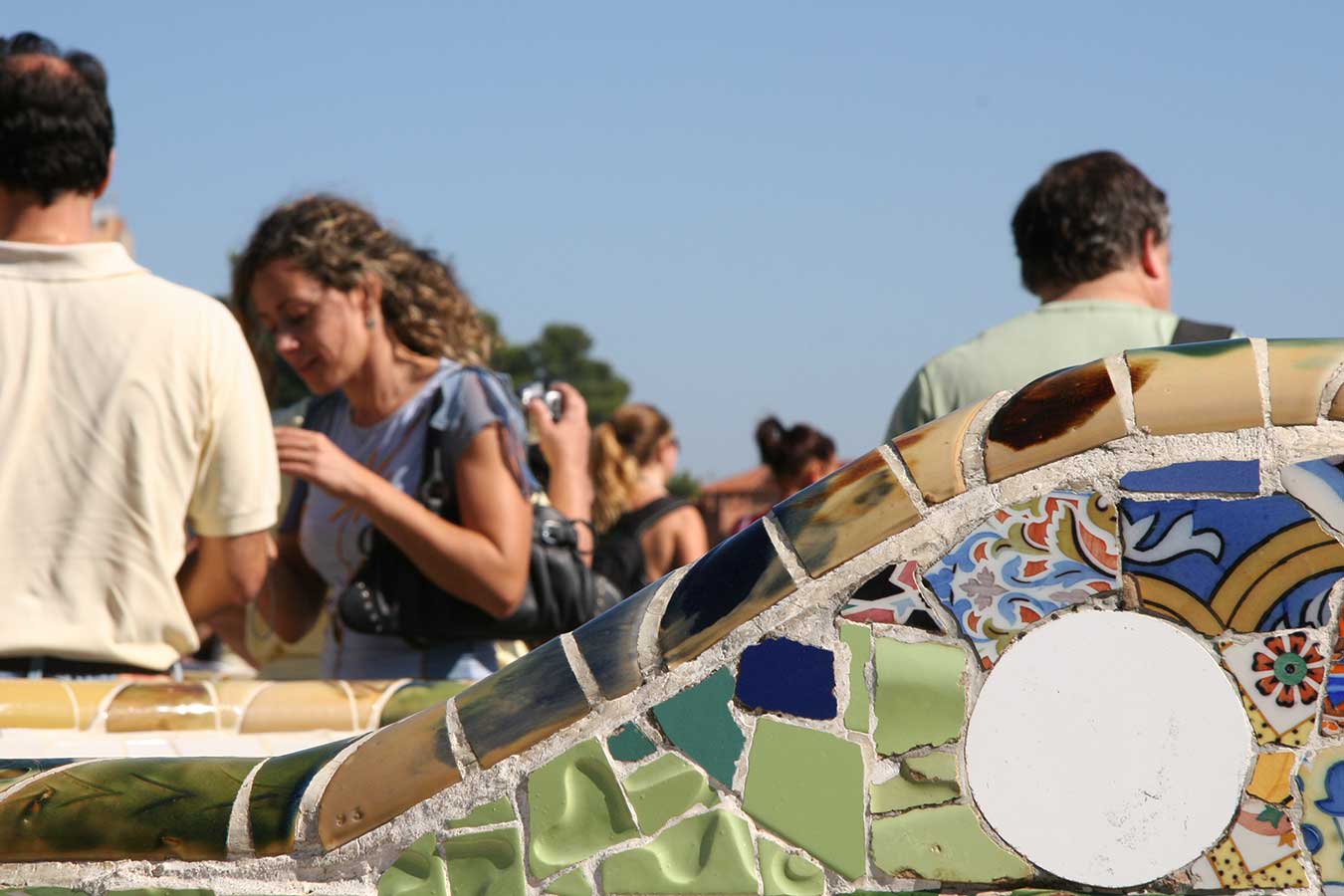
The Hypostyle Hall is a much used element in classic architecture that consists of columns holding up the floor of another level, creating a space between the two levels. In Park Güell the space is created with the use of 86 columns. The columns are inspired by classic Greek columns in doric style. The columns are hollow and direct the rainwater from the top into a reservoir below the square. The water in the reservoir could be used to irrigate the park. The hypostyle hall was built between 1908 and 1909, and was intended as a marketplace for the park's residents.
Between the pillars, three spaces are formed, where there are no pillars that function as church spaces in a church, and which are held up by the formation of so-called Catalan vaults. In the ceiling between the pillars are inserted four medallions with mosaics made with trencadís representing the four seasons.
The pink house, which was Gaudí's home from 1906 to 1925. The house was not designed by Gaudí himself but the student Francesc Berenguer, and today serves as a museum where it is possible to see more of Antoni Gaudí's furniture.
The salamander, which serves as a fountain, is another of the most famous elements of the park. The salamander, or dragon (el drac, in Catalan) is lined with trencadís, torn bricks, which are put together in colorful patterns.
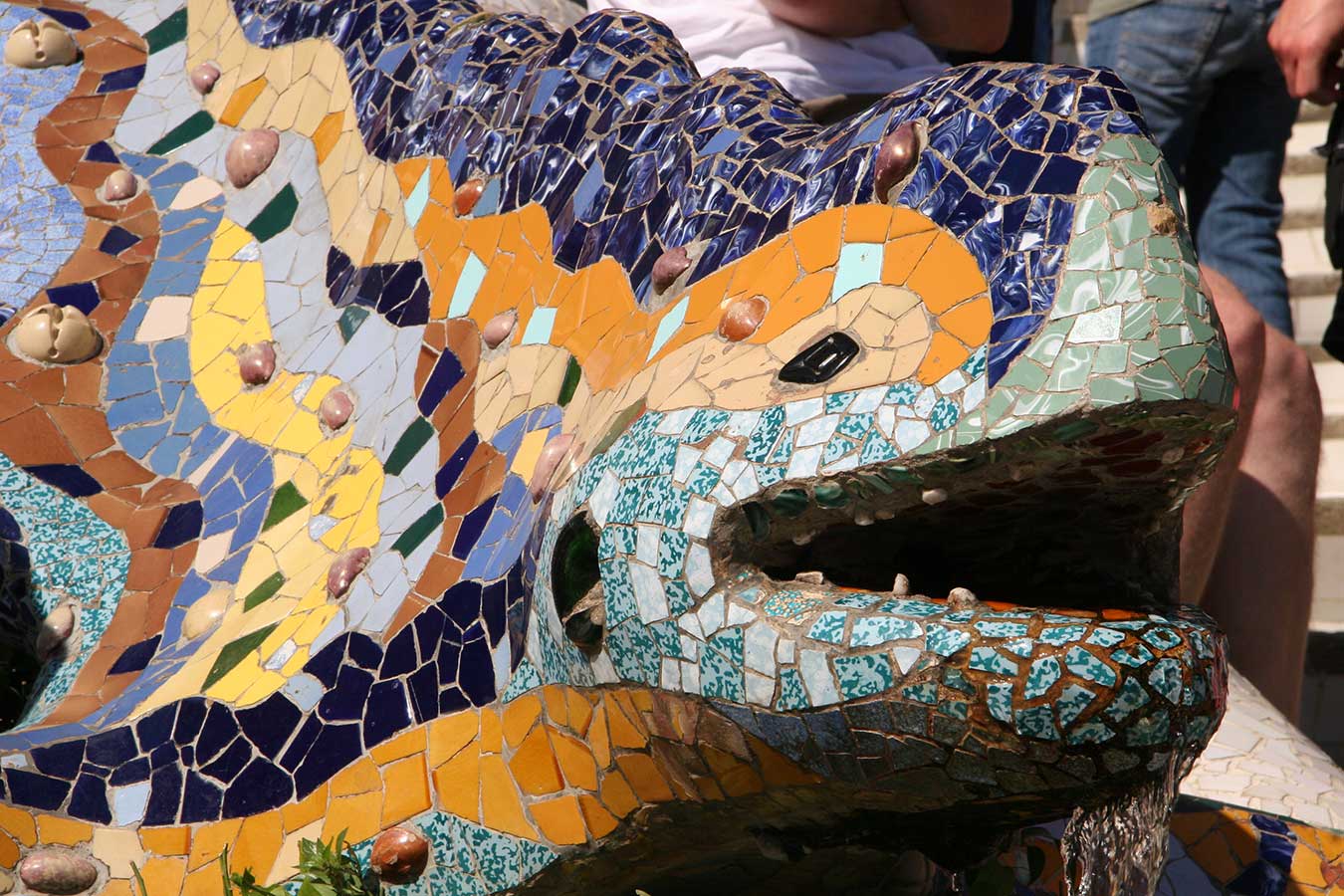
Antoni Gaudí started construction in 1900, but in the middle of the construction process, a crisis arose under the name La Setmana Tràgica (the Tragic Week). The conflict started when the inhabitants of Barcelona protested to the fact that the Spanish state wanted 40,000 Catalans to enlist in the army for the war against Morocco.
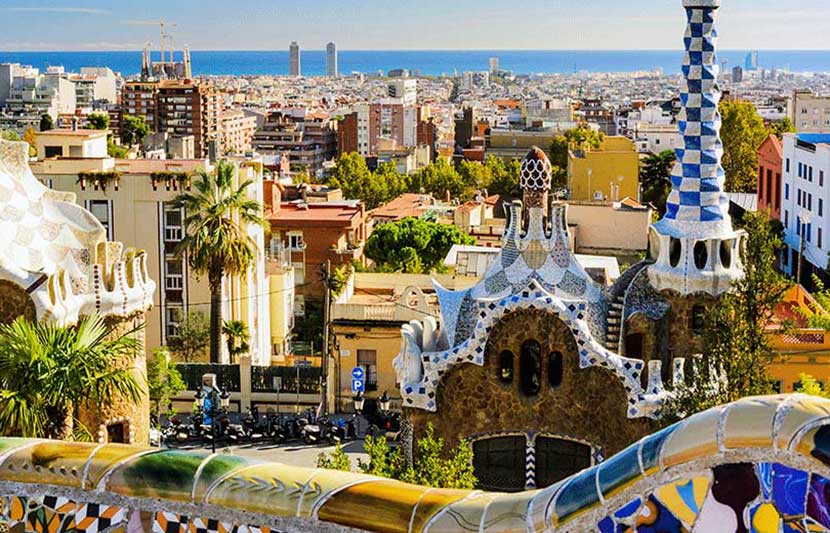
If you move outside the 'Monumental Area' and move through the forest area to the top of the park, you will be rewarded with a fabulous view. At the top of the park you have one of the best vantage points in Barcelona, and from here you can see the Olympic Port, the Mediterranean, Torre Agbar, the Sagrada Familia and the Eixample district.
